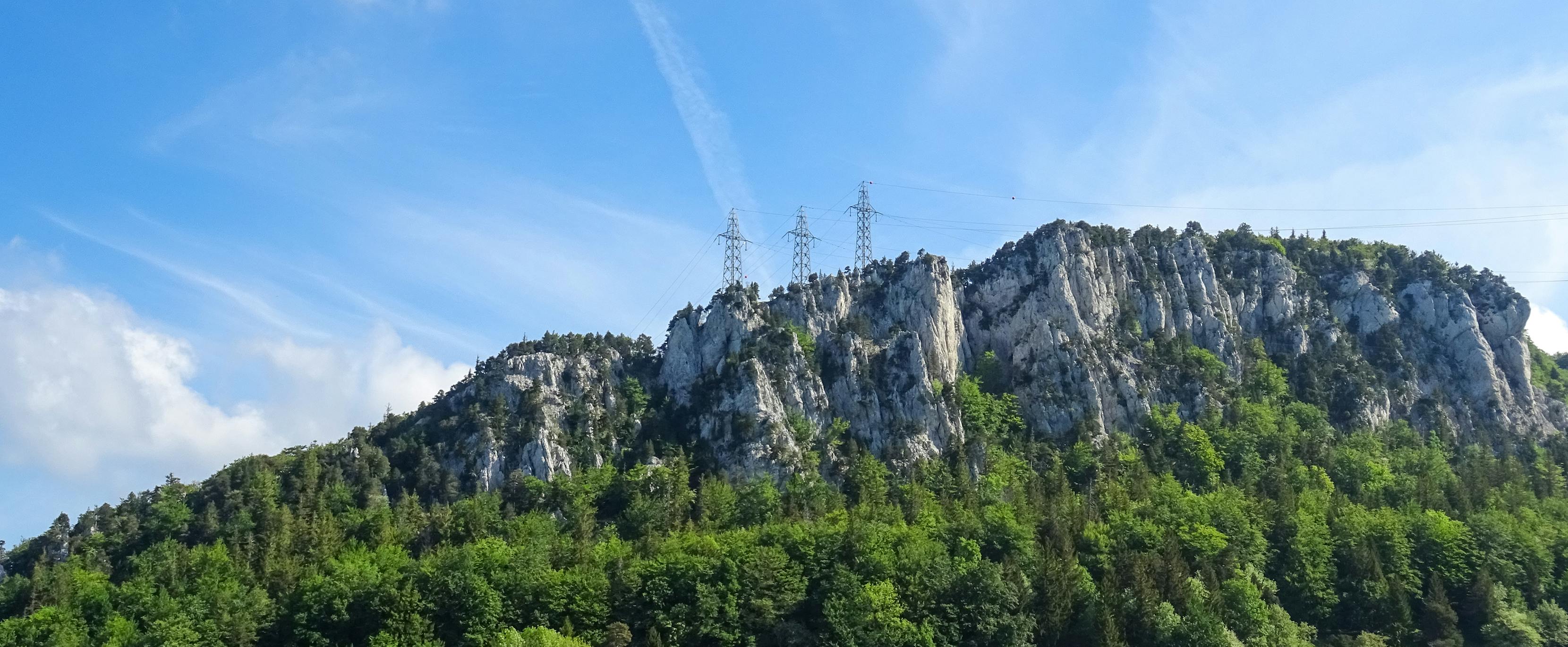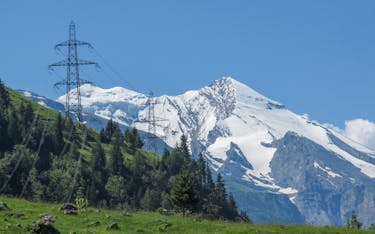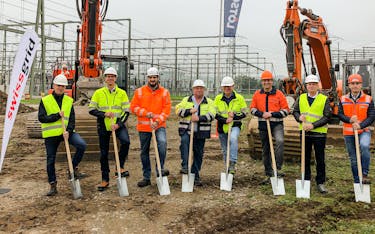The SFOE monitoring group submitted a recommendation to the Federal Council in favour of the overhead line corridor shown on the map. The working corridor put forward by Swissgrid in the SÜL application was optimised following an on-site inspection and various technical discussions.
Technical difficulties caused by cables
Recent studies have expressed fundamental reservations about the use of long sections of underground cable in the extra-high-voltage grid for technical and operational reasons. On the one hand, long cable lines lead to undesirable reactive power compensation. On the other hand, cable systems can generate resonances that can disrupt or even seriously jeopardise stable grid operation. What is more, cable lines in the extra-high-voltage grid are also a hindrance when it comes to black start capability – i.e. the ability to restart the grid autonomously from a switched-off state. The operational risks increase for Swissgrid when there is a greater density of underground cables in the extra-high-voltage grid. In the future, it will only be possible to plan underground cables in the transmission grid where they are absolutely necessary. There is clearly no such need in the Flumenthal – Froloo project.
Public participation
Before the Federal Council makes its decision, private individuals are free to give their views on the monitoring group’s recommendation during the consultation and participation procedure.
The project documents will be available from the relevant municipal administrations for 30 days from 2 May 2025. During this period, private individuals can take advantage of the public participation procedure and contact the canton they live in:
- Amt für Raumplanung des Kantons Basel-Landschaft
Kreuzbodenweg 2
4410 Liestal
raumplanung@bl.ch - Amt für Gemeinden und Raumordnung des Kantons Bern
Abteilung Kantonsplanung
Nydegggasse 11/13
3011 Bern
kpl.agr@be.ch - Amt für Raumplanung des Kantons Solothurn
Werkhofstrasse 59
4509 Solothurn
arp@bd.so.ch
The project documents can also be consulted on the SFOE website during the above-mentioned period.
Next steps
The Federal Council is expected to choose the corridor for the new 220-kV line by the end of 2025. Swissgrid will then prepare the construction project and submit the planning approval application to the competent authority, the Swiss Federal Inspectorate for Heavy Current Installations (ESTI). This will be followed by another public consultation. In the best-case scenario, provided there are no legal proceedings, Swissgrid will begin the construction of the line in 2030, and the work will take around two years. Once the new line has been commissioned, the existing 145-kV IWB line will be dismantled.
The following schedule is based on the current planning status and represents the best possible scenario, without taking into account potential legal proceedings.

















